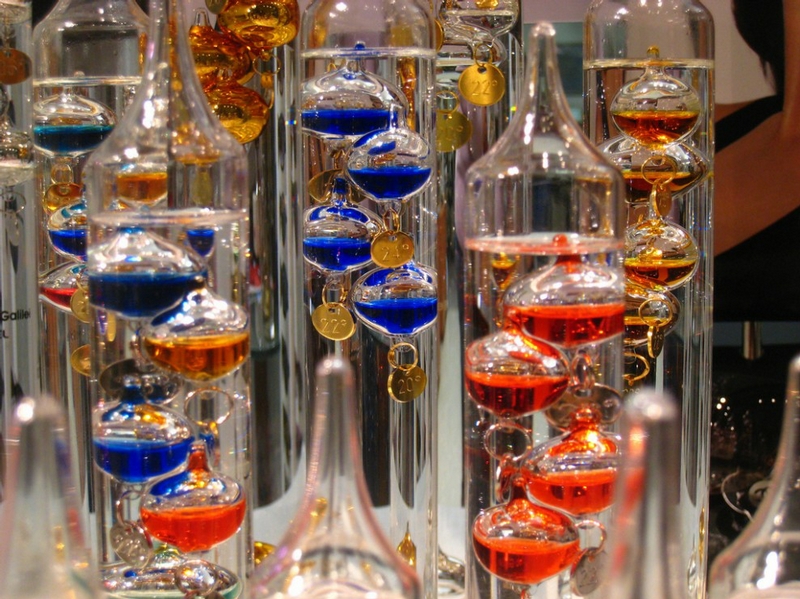
Galileo Galilei was an Italian physicist, mathematician, astronomer and
philosopher who played a major role in the Scientific Revolution. He
was the first who discovered that the density of a liquid is affected by
changes in temperature.
The named after Galileo thermometer is made of a sealed glass cylinder
containing a clear liquid (usually water) and several bubbles each
having a weight attached to
it.
As the temperature changes, they float and sink depending on
mathematical principles. It's worth to mention that besides the
practical value, the Galileo thermometer has the aesthetic one as well -
this is quite a wonderful thing in itself.

Though Galileo hadn't even invented this thermometer, it still was
named after him because it simply wouldn't exist without his
discoveries. These devices have been produced since the 17th century.
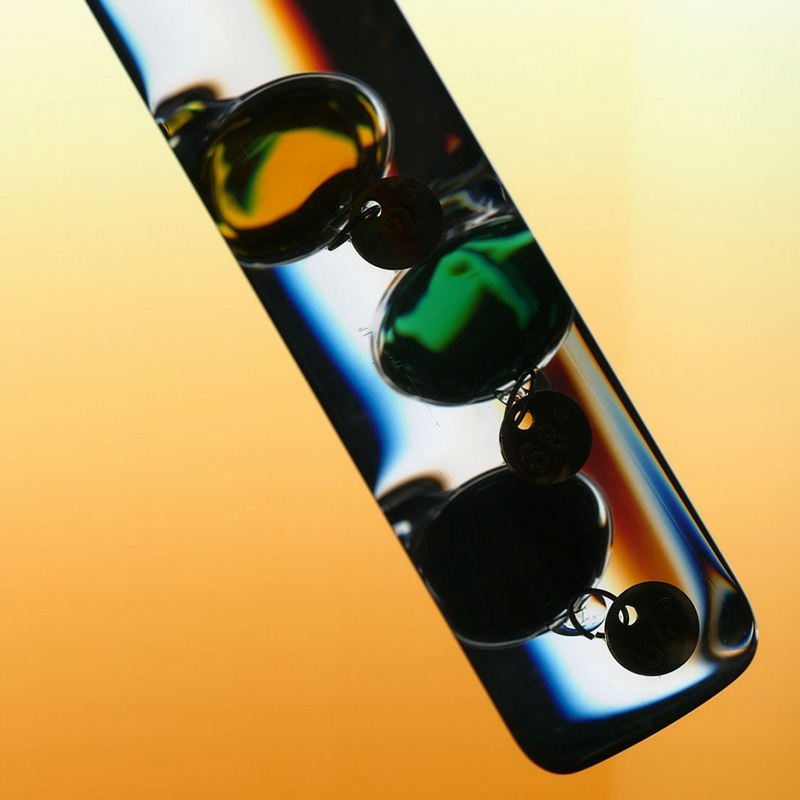
All bubbles are filled with colored liquid that gives the thermometer some special beauty.
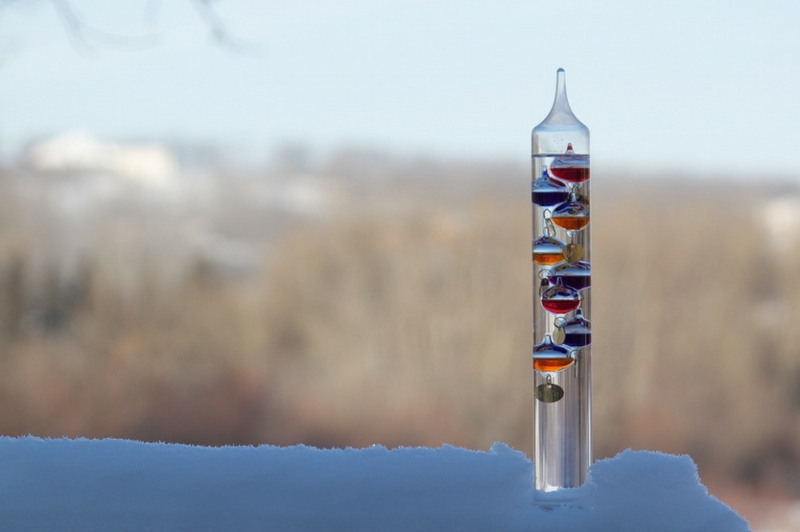
Each of them has a weight attached to it with an engraved number and
degree symbol which indicate a certain temperature. These are
counterbalances and they all are slightly different from each other in
their weight.

Every bubble in a cylinder has the same volume and therefore the same
density. So, after the weights are attached to the bubbles, each differs
very slightly in density from the others.
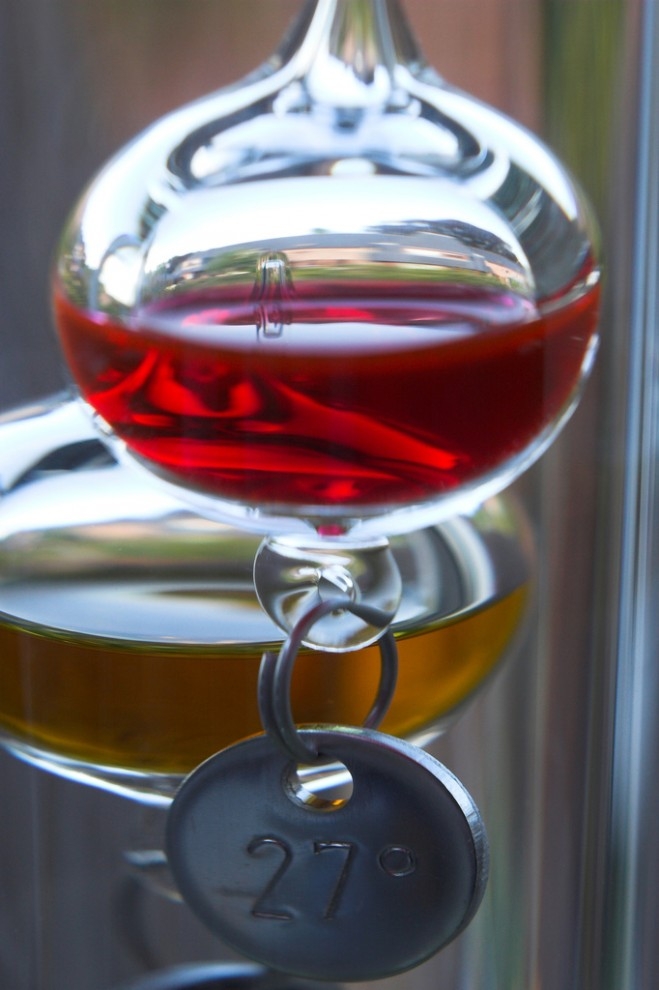
As you know there are two major forces that influence an object
immersed in a fluid: the force of gravity that pulls an object down and
the upthrust that pushes it up.
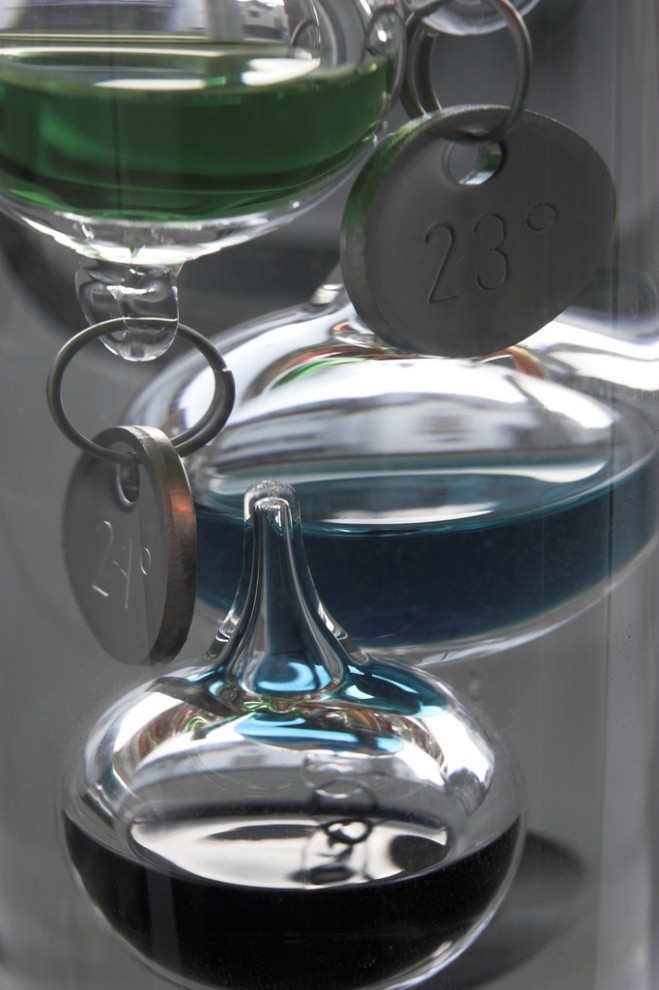
So when the temperature of the air outside the thermometer changes -
the temperature of the water inside the cylinder also changes, as well
as its density.
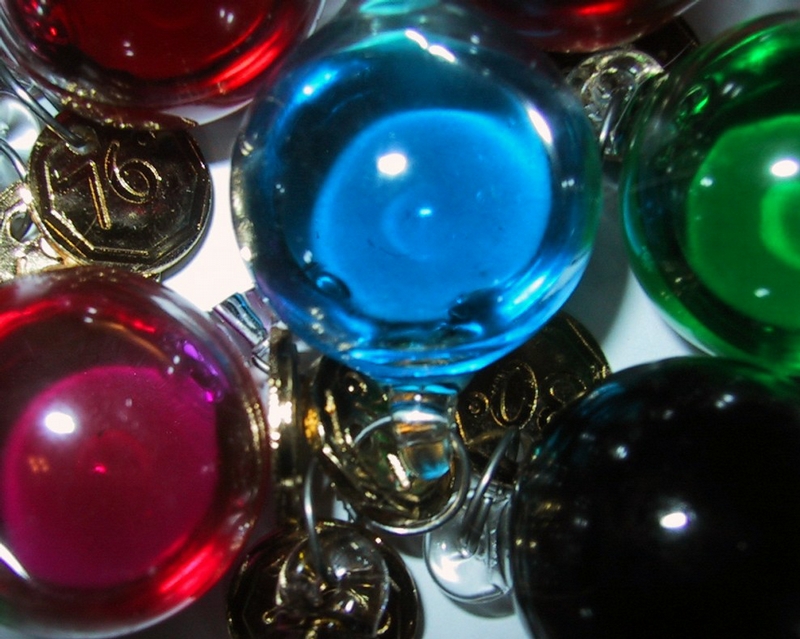
As a result, the force of gravity surpasses the upthrust and that's why some bubbles start to float while others - to sink.
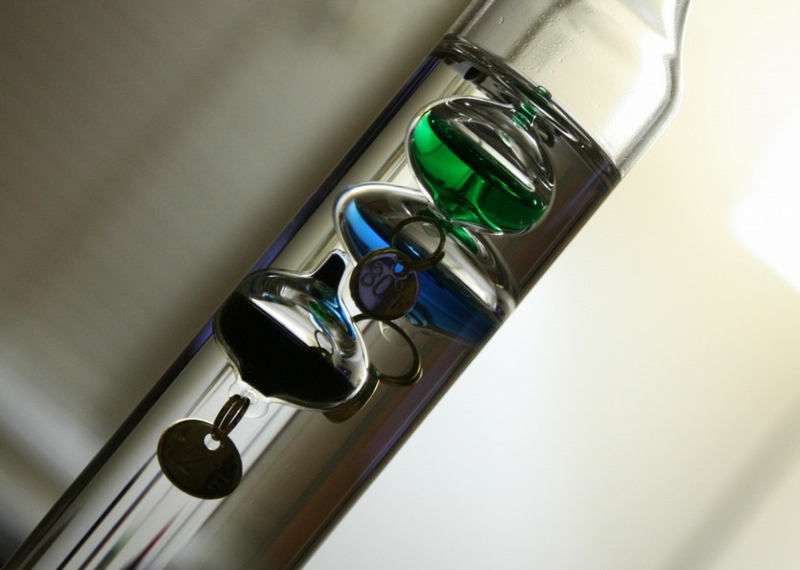
The bubble that sinks indicates better the current temperature.
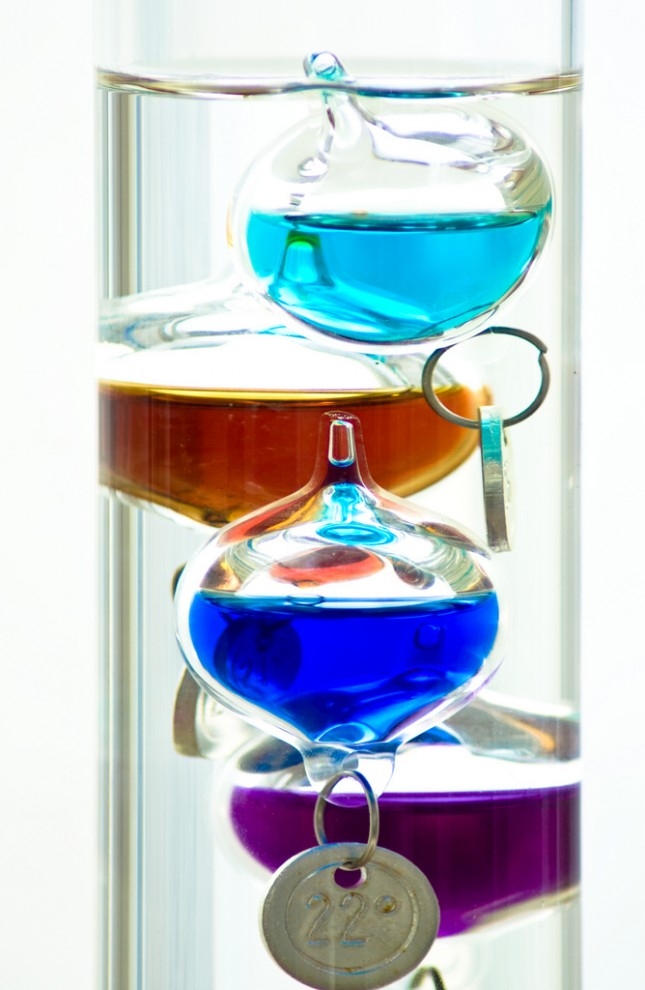
So this is the main idea of the Galeleo's discovery - when the
temperature rises - the density of water falls, the upthrust falls as
well that's why a certain bubble goes to the bottom.
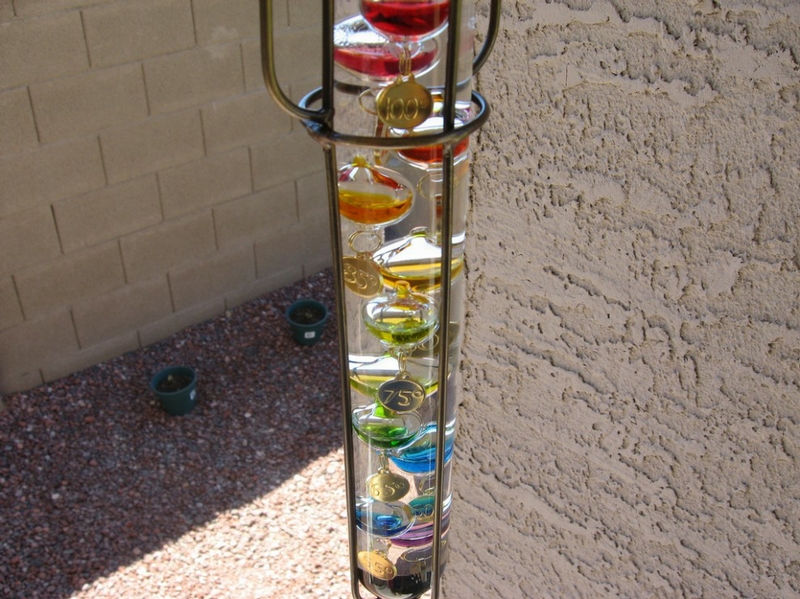
And vice versa. If the temperature falls, the density rises and the upthrust rises as well.

As for the design, the thermometer is notable for its elegance and a
beautiful shape. This is a real example of the scientific beauty or
beatiful science.
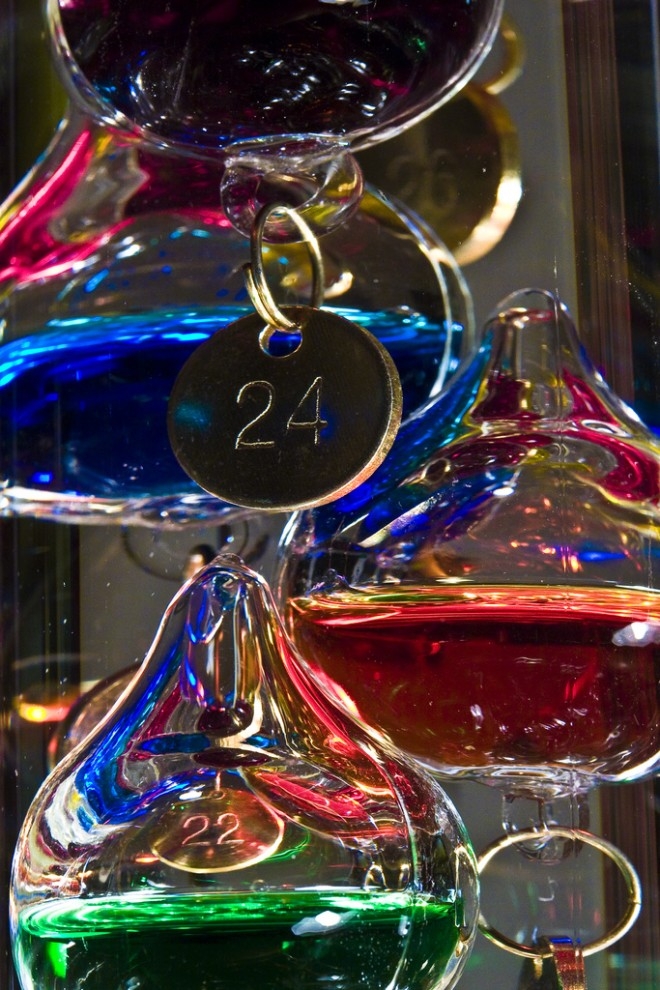

0 comments:
Post a Comment